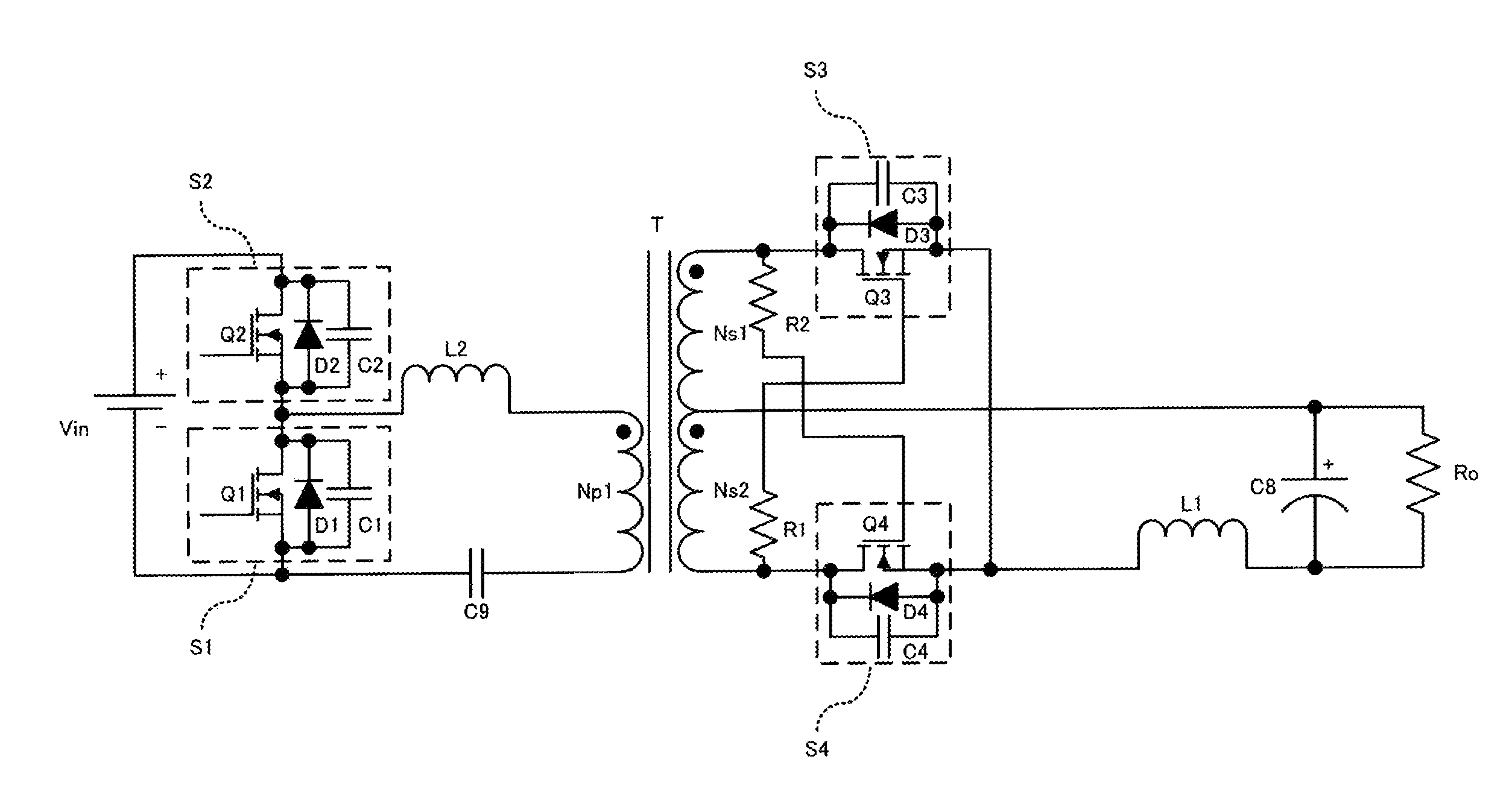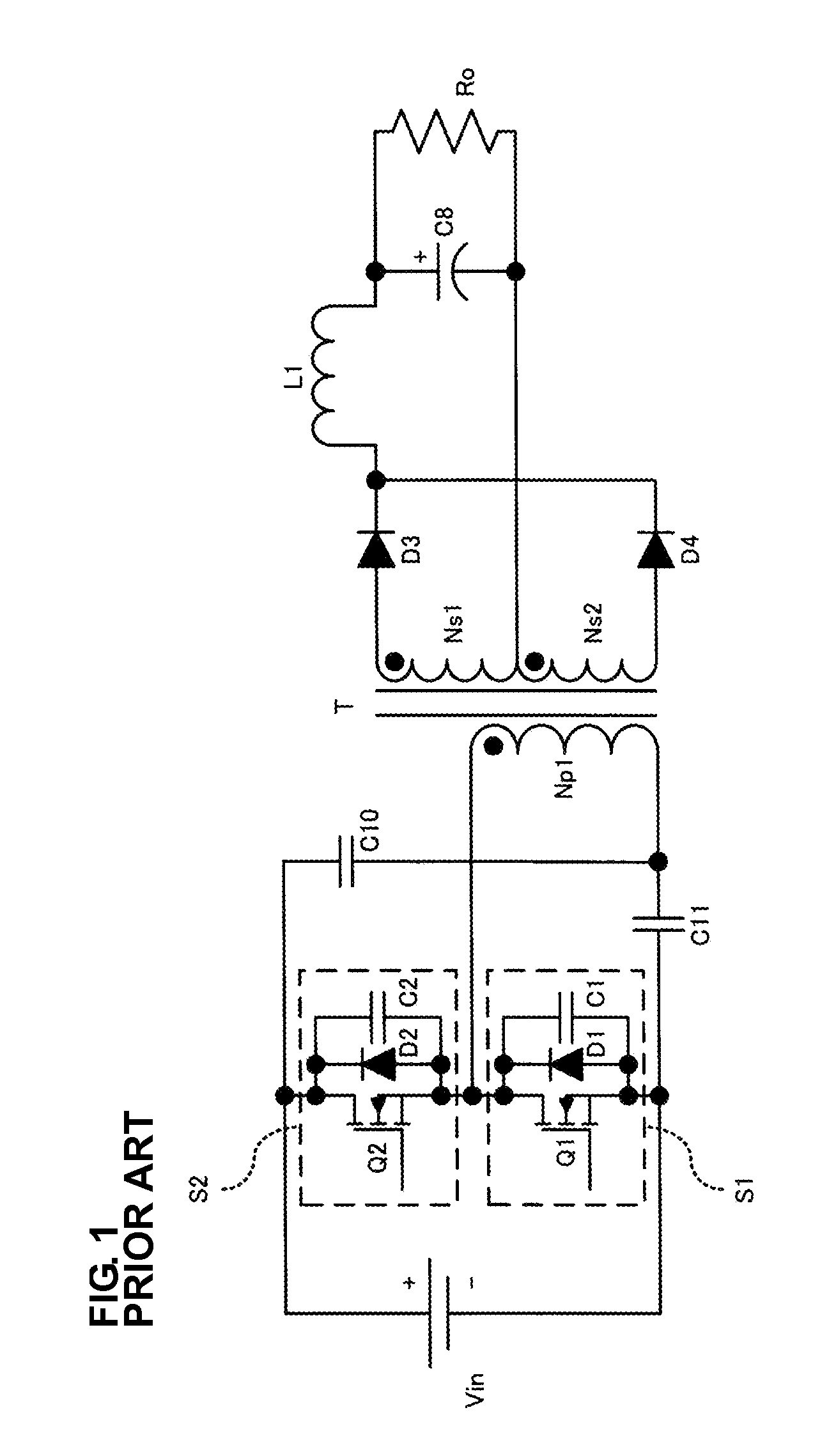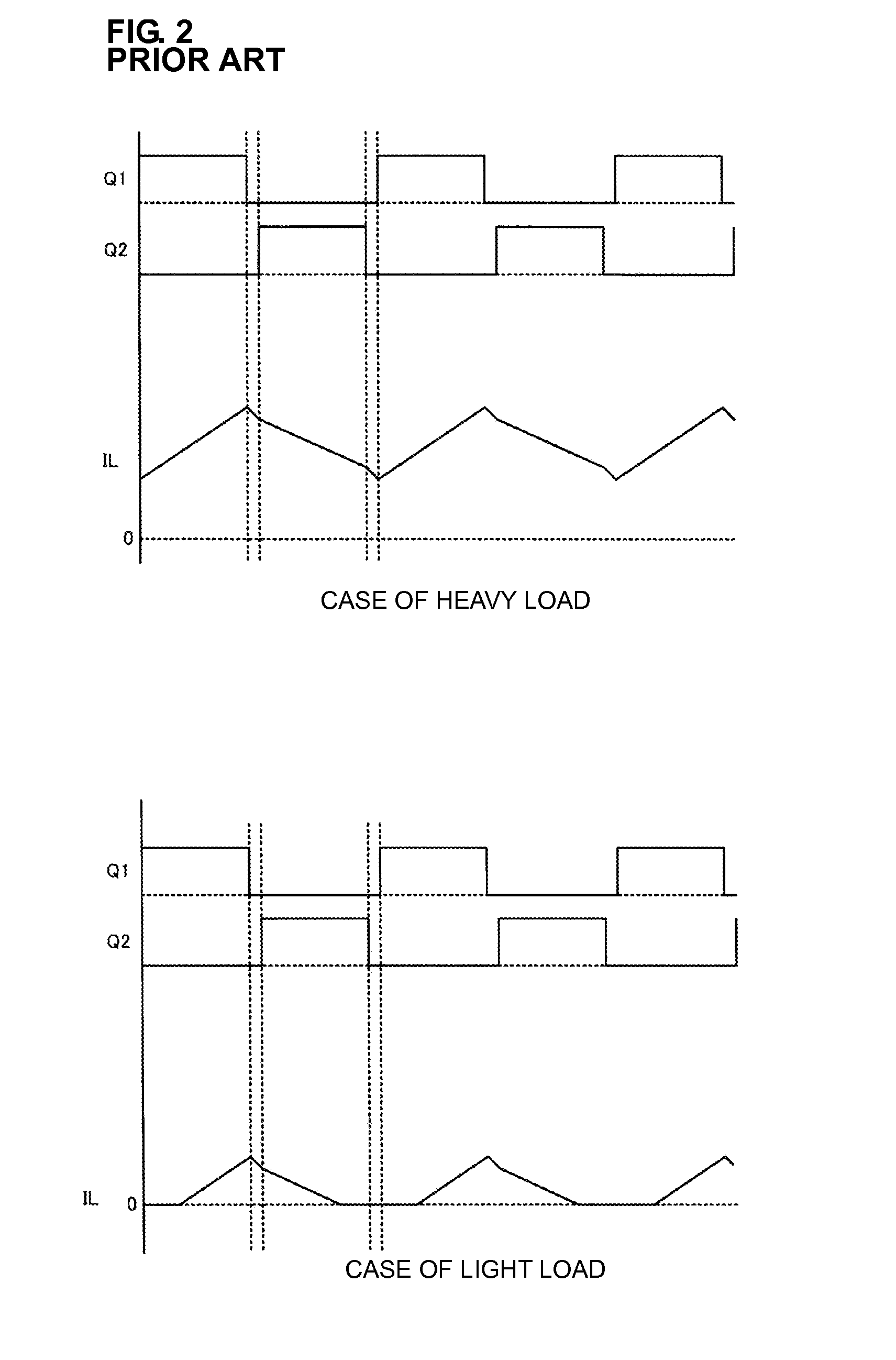Switching power-supply apparatus
a power supply and power supply technology, applied in the direction of electric variable regulation, process and machine control, instruments, etc., can solve the problems of high withstand voltage, low output voltage, and control becomes impossible, so as to reduce the cost, reduce the “on” resistance, and reduce the loss
- Summary
- Abstract
- Description
- Claims
- Application Information
AI Technical Summary
Benefits of technology
Problems solved by technology
Method used
Image
Examples
first preferred embodiment
[0060]FIG. 6 is a circuit diagram of a switching power-supply apparatus according to a first preferred embodiment of the present invention.
[0061]As illustrated in FIG. 6, in a primary-side power converter circuit of the switching power-supply apparatus, a series circuit is connected to an input power supply Vin and preferably includes a first switch circuit S1 including a first switching element Q1, a first capacitor C1, and a first diode D1 connected in parallel with one another, and a second switch circuit S2 including a second switching element Q2, a second capacitor C2, and a second diode D2 connected in parallel with one another. Furthermore, the two ends of another series circuit included therein, which includes a first input inductor L2, a first primary coil Np1 of a transformer T, and an input capacitor C9, are connected to the two ends of the first switch circuit S1.
[0062]In addition, in a secondary-side power converter circuit, the drain terminal of a third switch circuit ...
second preferred embodiment
[0079]FIG. 10 is a circuit diagram of a switching power-supply apparatus according to a second preferred embodiment of the present invention. The differences from the circuit illustrated in FIG. 6 are that the series circuit including the first input inductor L2, the first primary coil Np1, and the input capacitor C9 is preferably connected to the two ends of the second switch circuit S2, rather than to the first switch circuit S1. The remainder of the configuration preferably is substantially the same as that illustrated in FIG. 6.
[0080]With this configuration, the same operational advantages can be achieved as those achieved by the first preferred embodiment of the present invention.
third preferred embodiment
[0081]FIG. 11 is a circuit diagram of a switching power-supply apparatus according to a third preferred embodiment of the present invention. The differences from the circuit illustrated in FIG. 6 are that the switching power-supply apparatus is configured such that the transformer T is preferably a two-transformer-type converter that includes a first transformer T1 including the first primary coil Np1 and the first secondary coil Ns1 and a second transformer T2 including a second primary coil Np2 and the second secondary coil Ns2. Furthermore, preferably, a second input inductor L3 is connected in series with the second primary coil Np2, and the two ends of the input power supply Vin are connected to a series circuit including the second input inductor L3, the second primary coil Np2, the input capacitor C9, and the first switch circuit S1, the series circuit including the first input inductor L2, the first primary coil Np1, and the input capacitor C9 is connected in parallel with t...
PUM
 Login to View More
Login to View More Abstract
Description
Claims
Application Information
 Login to View More
Login to View More - R&D
- Intellectual Property
- Life Sciences
- Materials
- Tech Scout
- Unparalleled Data Quality
- Higher Quality Content
- 60% Fewer Hallucinations
Browse by: Latest US Patents, China's latest patents, Technical Efficacy Thesaurus, Application Domain, Technology Topic, Popular Technical Reports.
© 2025 PatSnap. All rights reserved.Legal|Privacy policy|Modern Slavery Act Transparency Statement|Sitemap|About US| Contact US: help@patsnap.com



